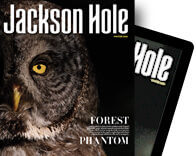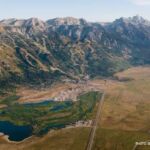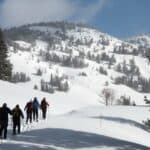Read The
Current Issue
Q&A: Madison Webb Stanko
// By Helen Olsson
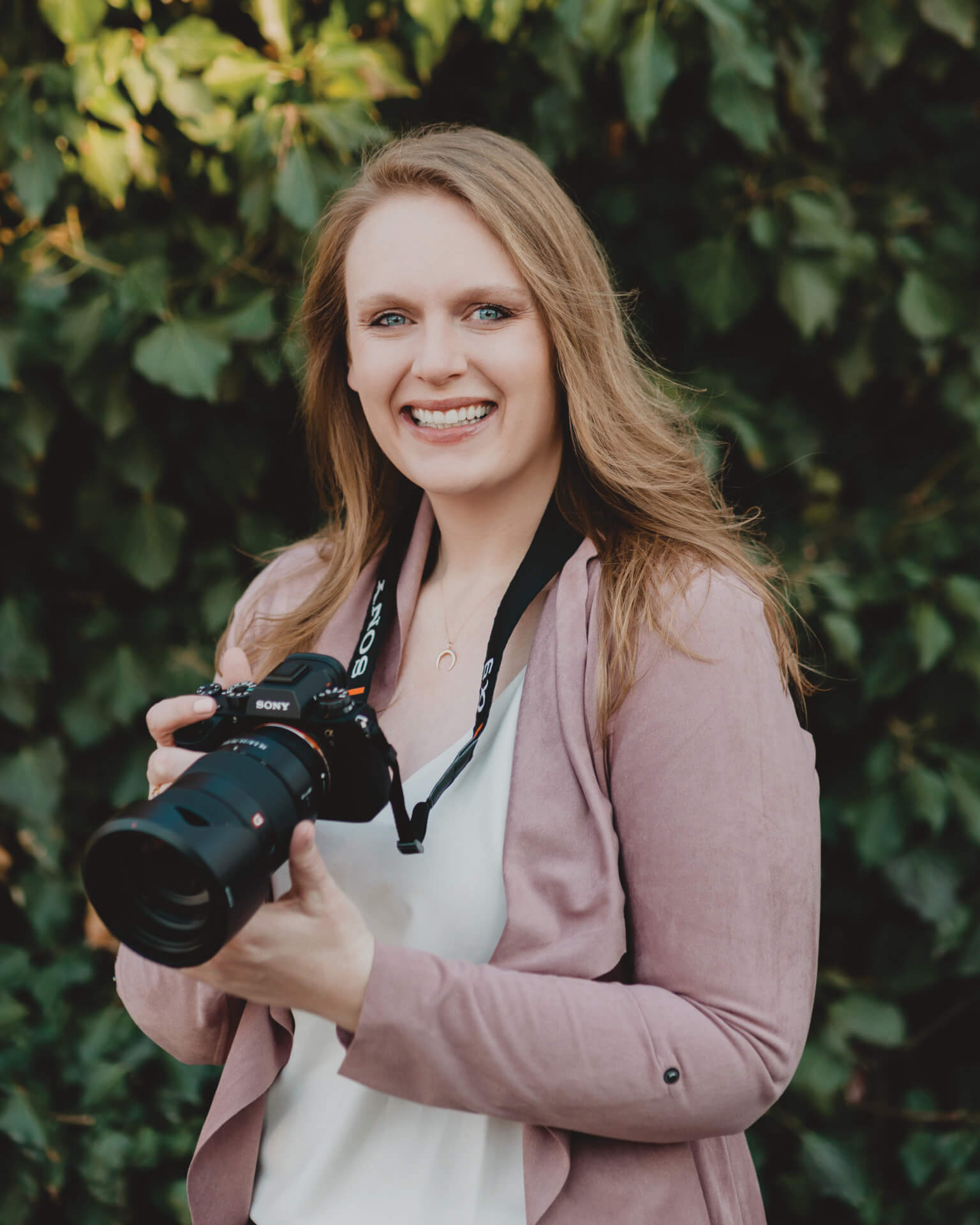
Madison Webb Stanko spent her childhood summers living in a fire tower in Idaho’s Payette National Forest. (Her mom worked for the forest service.) “The tower had windows on all sides, and during storms we’d be sitting there surrounded by lightning. It was scary but incredible,” she says. “That experience fundamentally instilled in me a love of wild places, nature, and wildlife.”
In high school, she took AP studio art, using photography as her medium. “The teacher didn’t know what to do with me; everyone else was doing painting or sculpture,” she says. Following her twin passions of art and nature, Stanko worked at museums in Cody and Santa Fe, finally settling in Jackson in 2014, first working for the Jackson Hole Art Auction and today as chief marketing officer at the National Museum of Wildlife Art.
Stanko worked at museums in Cody and Santa Fe, finally settling in Jackson in 2014, first working for the Jackson Hole Art Auction and today as chief marketing officer at the National Museum of Wildlife Art.
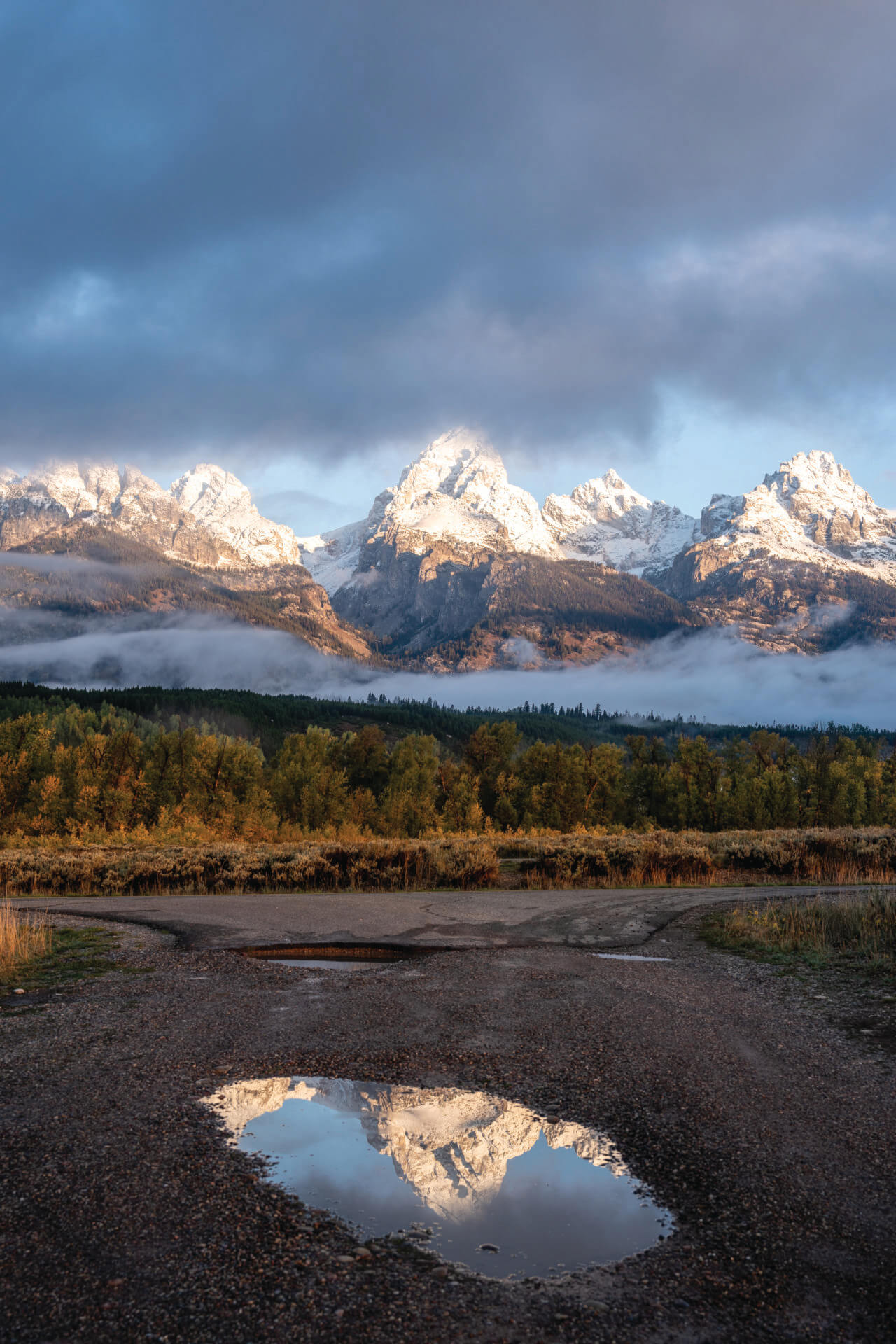
Stanko skis and snowboards, but she’d rather explore Jackson’s wild places on snowshoes with her camera, looking for bighorn sheep and ermines. She shoots wildlife and landscapes but also portraits, mostly in Grand Teton National Park. One of her most memorable moments came when she was intent on shooting a winter sunrise at Schwabacher Landing, one of Jackson Hole’s most iconic viewpoints. It was mid-November, and she’d walked a mile through fresh snow. “There wasn’t a human anywhere for miles,” she says. Around a bend, she suddenly encountered three grizzly bears just 20 feet away. It was Jackson’s beloved Grizzly 399 and her two sub-adult cubs. Stanko backed away slowly, bear spray in one hand, camera in the other. “There are millions of photographs of this bear, but no one else has that photo,” she says. “It was really special.”
Stanko finds joy in finding new compositions in the Tetons. “It can sometimes feel like everything’s been done,” she says. “This fall, I found a pothole with a puddle that perfectly reflected the Grand Teton. I got down really low to capture it. It’s one of my favorite shots.”
We got Stanko to sit down for a Q&A with us.
Where do you find inspiration?
MWS: I’m a big reader. For me, this quote from Cheryl Strayed’s book Wild was a life-changing moment: “There’s always a sunrise and always a sunset, and it’s up to you to choose to be there for it. Put yourself in the way of beauty.” That’s the way I approach my photography. Nothing will happen if you don’t go out and see it. It may not be the beauty you were expecting, but you’ll find beauty.
How do you define success?
MWS: It’s important to manage expectations. It’s easy to get caught up in wanting to capture a specific shot or animal. But nature moves on her own schedule. I set one simple goal for myself: get one shot that I couldn’t have captured in my living room. That’s how I define success. If I went out wanting to see a fox and didn’t, then have I failed? But maybe I got an incredible sunrise. It’s about reframing what success looks like.
How do you describe your approach behind the lens?
MWS: When you’re in wild spaces, it’s essential to be alert. You can get fixated on the bull moose in front of you—and miss the one lying down. Always scan the landscape, even behind you. To stay flexible, I don’t shoot with a tripod (unless I need it for long exposures). I like the mobility of the handheld approach. Things change fast, and I want to be able to duck, pivot, or run. I also try to be forward-thinking—to predict, based on an animal’s behavior, what might happen in five minutes and precompose a scene.
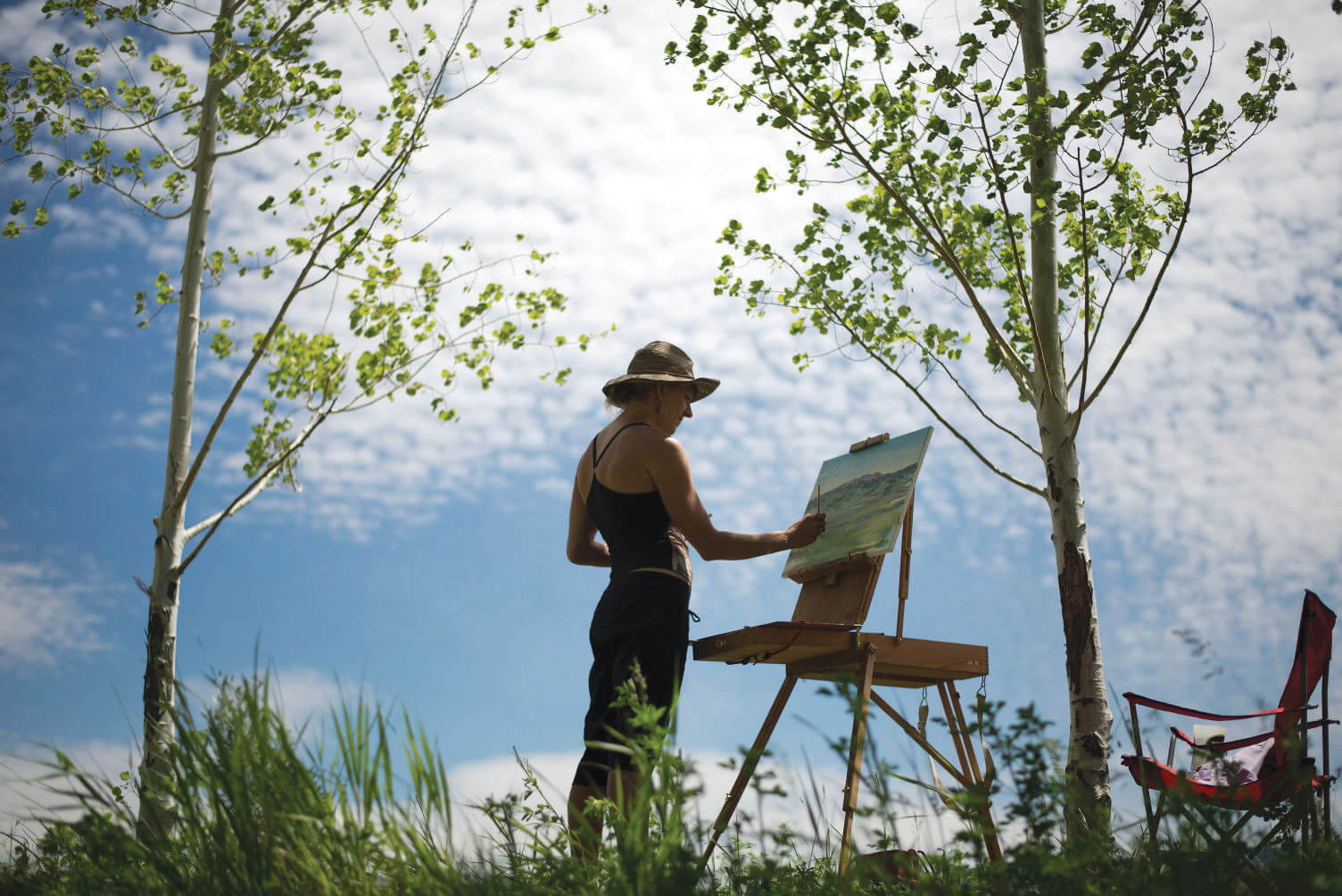
Two Favorite Art Events
Plein Air Fest, June 14, 2025
Every June since 2011, some 50 regional artists set up their canvases along the National Museum of Wildlife Art’s three-quarter-mile outdoor Sculpture Trail. The talent is a mix of emerging and established artists like Katherine Turner and Amy Ringholz. “It’s an incredible way for the community to interact with the artists and see their work come to life in a short time span,” Stanko says.
Western Visions Art Show + Sale, Sept 6–28, 2025
This summer marks the 38th installment of the museum’s Western Visions Art Show + Sale, which brings in works created specifically for the show by an international mix of 175 contemporary wildlife artists. It’s the largest and longest-running fundraiser for the museum and a signature event of the Jackson Hole Fall Arts Festival.
Three Favorite Artists

In Madison’s words
William Herbert Dunton was the founding member of the Taos Society of Artists. Of his 12 works in our collection, my favorite is Tapestry of Autumn (1927). He was one of the first artists to approach the subject of wildlife in an abstract, post-impressionistic style. He’s less concerned about the anatomical rendering of the animals than with color, light, and pattern—and how it all fits together.
Georgia O’Keeffe is a foundational, fundamental American artist. I’ve always been drawn to her work. I lived in New Mexico and visited Ghost Ranch [a landscape that inspired the artist], so I couldn’t not pick O’Keeffe as a favorite. There’s something incredibly special about her work. We’re lucky enough to have an O’Keeffe in the museum’s collection. Called Antelope (1954), it’s a pronghorn skull that feels like it’s melting into the earth.
In 2000, Lanford Monroe died of a heart attack at 50 at the height of her career. Her works are these beautiful atmospheric landscapes that feel intimate, beautifully integrating animal and landscape. As a wildlife photographer, I’m drawn to her work because it’s like real life: sometimes you’re standing in front of a scene, and you don’t see the animals right away. Cold Trail (1999), which features a wolf and a stream, is one of my favorites. JH
